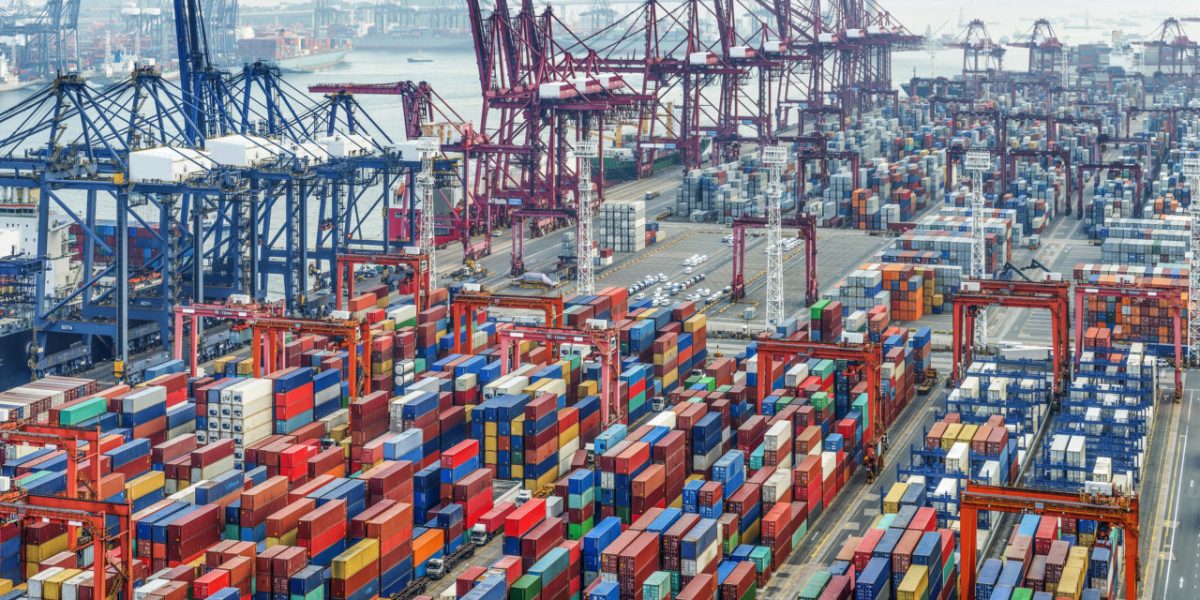Clarkson’s containership port congestion index shows that congestion on the US east coast has recently risen to near record levels. It was observed that as of last Thursday 36.2% of the global fleet was waiting at various ports, up from 31.5% in the pre-pandemic years from 2016 to 2019. “Ongoing disruption resulting from the port congestion has been very favourable and supportive to the charter market, despite trade volumes in 2022 so far having come under pressure from a combination of factors,” Clarksons noted.
An operational update from German carrier Hapag-Lloyd, highlighted the myriad congestion issues facing carriers and shippers around the world. Across key Chinese ports such as Ningbo, Shenzhen and Hong Kong, terminals are under pressure with yard and berth congestion thanks to ongoing covid measures and the typhoon season. At other key Asian ports, yard density is reported hitting 80% in Singapore, and is higher still, at 85%, at South Korea’s top port, Busan.
In Europe, the start of summer holidays, rounds of strikes, growing covid cases, and bunching of vessels coming from Asia have all transpired to create congestion at many ports, including Antwerp, Hamburg, Le Havre and Rotterdam.
In Latin America, ongoing nationwide protests have hampered port operations in Ecuador, while further north, a cyber attack, which took out Costa Rica’s customs systems two months ago, is still causing trouble, while Mexico is one of the worst hit by the port congestion contagion with a number of ports reported to be suffering yard density of 90% leading to severe delays.
Reports of delays at North America’s terminals have dominated shipping headlines throughout the pandemic and remain a cause for concern going into July with Hapag-Lloyd noting waiting times for berths are running upwards of 19 days at New York/New Jersey, while the queue off Savannah is approaching record levels with waiting times there in the region of seven to 10 days.
On the west coast, while the spotlight is off Los Angeles and Long Beach for once, Oakland is suffering, with the German carrier warning ships can wait from anywhere between seven to 27 days for a space to open up at Oakland International Container Terminal.
In Canada, the situation is dire on the west coast thanks largely to limited rail availability with Vancouver facing “significant delays” according to Hapag-Lloyd, and yard density hitting 90%. At Prince Rupert, meanwhile, the yard is heavily utilised at 113%, and average rail dwell presently stands at 17 days. The increased dwell is due to lack of available railcars.
AIS ship tracking data analysed by British consultants Drewry has revealed that the number of containerships waiting outside of major ports is indeed growing.
“With no changes to our expected supply chain recovery timeline the market will continue to be denied capacity that it otherwise would have had access to,” Drewry stated in a recent report, adding: “We estimate that effective containership capacity will be about 15% below potential this year, following on from a 17% reduction last year.”
Statistics analysed by Copenhagen-based Sea-Intelligence through to end May show that 9.8% of the global fleet was unavailable due to supply chain delays, down from a peak of 13.8% in January – and also down from 10.7% in April. However, shippers have been warned not to celebrate this improvement.
The level of capacity removed from the market in May 2022 is still higher than in 2020 and 2021.
“This means we are at the beginning of the peak season and the global fleet is already lacking more capacity, than was the case at the same point in time in 2021,” Sea-Intelligence warned. The current dockside woes at the onset of the peak season have yet to translate into any turnaround in spot rates, which, although still at incredibly elevated levels, have been on a downward trajectory for most of 2022.







